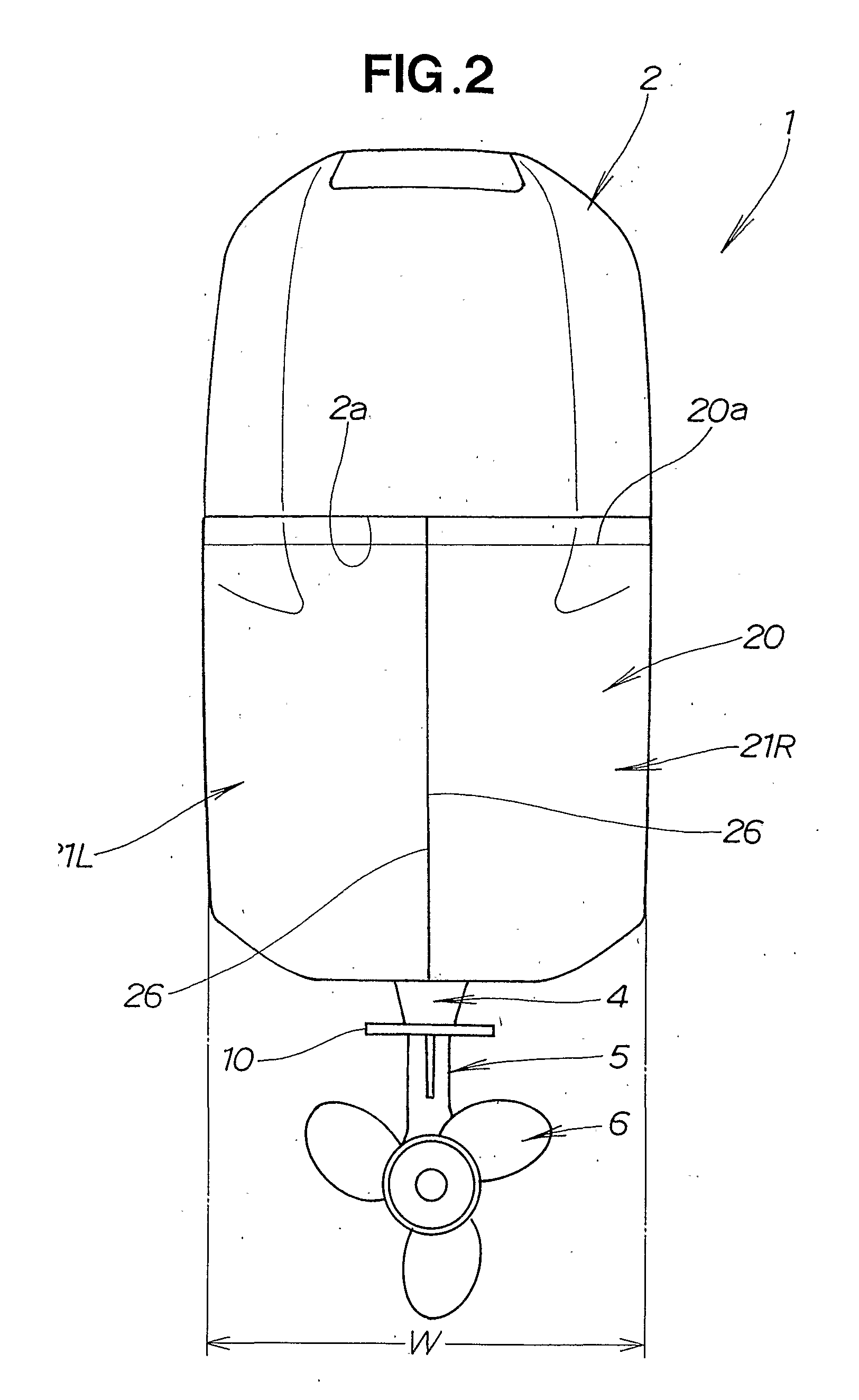Boat propulsion engine
- Summary
- Abstract
- Description
- Claims
- Application Information
AI Technical Summary
Benefits of technology
Problems solved by technology
Method used
Image
Examples
Embodiment Construction
[0030]Referring now to FIGS. 1 to 6 inclusive, description will be made as to a boat propulsion engine or an inboard-engine outboard-drive unit, according to a first embodiment of the present invention. The boat propulsion engine in this embodiment is referred to simply as an outboard motor.
[0031]The outboard engine 1 has a engine cover (top cover) 2 that covers the upper half of an engine (power source) 40, and an undercover 3 that covers the lower half of the engine 40, as shown in FIGS. 1, 2, and 3. An engine room R is formed by the engine cover 2 and undercover 3. An extension case (leg body) 4, which is a drive shaft case, is disposed below the under-cover 3. A gear case 5 having a propeller 6 for propulsion is disposed below the extension case 4.
[0032]A concavity 1a that is concave in the rearward direction of the outboard engine 1 is formed on the front portion of the extension case 4. The outboard engine 1 is mounted on the stern S1 of the hull S by way of a stern bracket 7....
PUM
 Login to View More
Login to View More Abstract
Description
Claims
Application Information
 Login to View More
Login to View More - R&D
- Intellectual Property
- Life Sciences
- Materials
- Tech Scout
- Unparalleled Data Quality
- Higher Quality Content
- 60% Fewer Hallucinations
Browse by: Latest US Patents, China's latest patents, Technical Efficacy Thesaurus, Application Domain, Technology Topic, Popular Technical Reports.
© 2025 PatSnap. All rights reserved.Legal|Privacy policy|Modern Slavery Act Transparency Statement|Sitemap|About US| Contact US: help@patsnap.com



